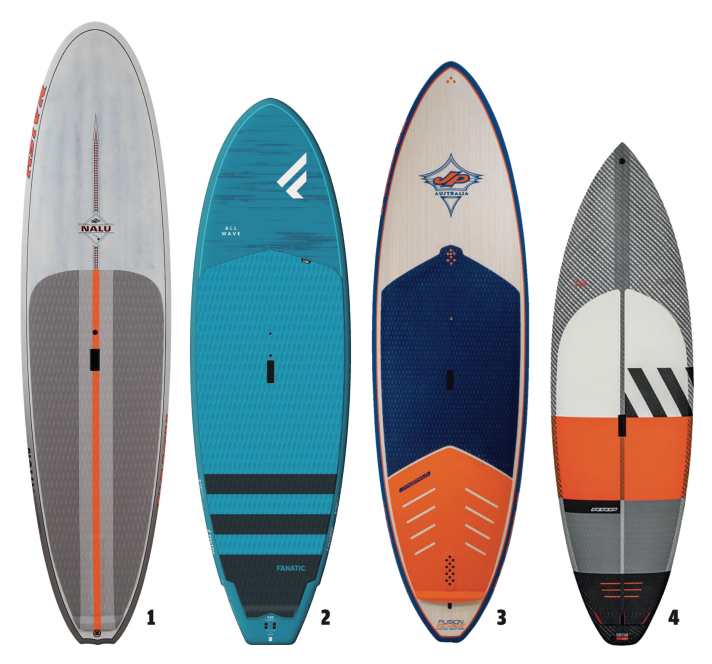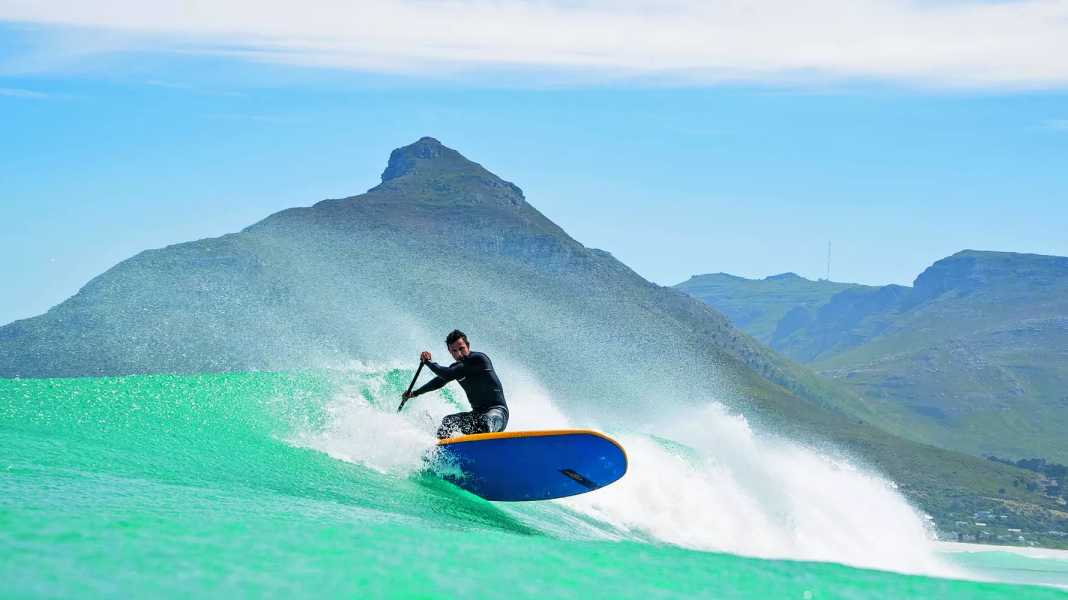
While in some sports you hardly have to fear any disadvantages on professional equipment - with a world champion downhill bike you can even ride down your small village hill comfortably and safely - skiing with a World Cup slalom ski is almost dangerous for hobby skiers. And when SUP surfing, a recreational paddler may not be able to paddle a single metre on a professional board.
Beginners who orientate themselves on the equipment of the best SUP surfers on the beach are guaranteed to make the wrong purchase. Because you can only improve if you surf a lot of waves. Hoping for that one super wave with the most radical board is hopeless. However, only enough volume and a less radical shape with sufficient width will allow you to ride as many waves as possible and have good learning success - and often more fun in the long term. After perhaps a one-off change, even dedicated but purely holiday paddlers are well advised to use boards with at least 40 to 50 litres more than their body weight.
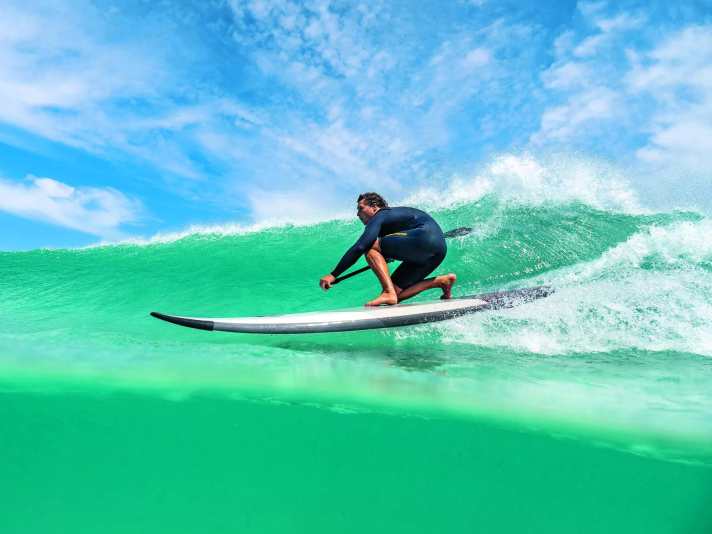
Dimitri Lehner for example. He is a professional sportsman, editor-in-chief of Freeride magazine and a waterman at heart. But even a lot of water sports experience doesn't protect you from experiences with boards that are too small: "I actually bought the right wave SUP straight away, which I still have today," he says, "a not-too-narrow 9'2" with 140 litres. But on holiday, on Fuerte and also in Hawaii, he ended up borrowing boards from his local mates. "Once it was a 105-litre Gun Shape, a real Kai Lenny board," Dimi remembers. "I paddled out exactly once and then fell off so many times - it was a real wobble. Many people think you need the ultimate performance board on the wave. But as a non-professional, you just paddle around like crazy because you can't stand on the spot. The wave often just rolled under me. Or I had a great wave - and then fell off. All the advantages you have with the SUP - that you can stand relaxed in the line-up and enjoy the atmosphere, for example - were gone."
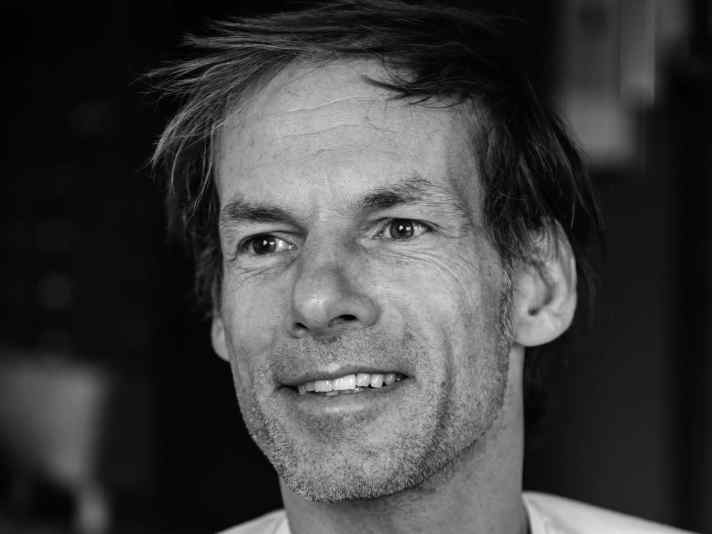
AlsoJosh Welzas the former editor-in-chief of the windsurfing magazine "surf" - now E-MTB - has certainly been thoroughly washed through all the waters, has gradually downsized his SUP board - only to end up "shifting down a gear" again. Despite regular opportunities to surf in good Atlantic waves, the last stage, a board with just over 100 litres in short board style, was a bit too stressful. "You have to be extremely practised for that, it's very wobbly, especially in the current you involuntarily bring a rail into the water from time to time and then it pulls the edge down and simply turns the board over. You also have to constantly balance with the paddle and switch sides from right to left." Paddling on narrow, curved boards under eight feet really does require optimum timing. You stand at right angles to the wave before paddling out, ideally in a "surf stance", and then have two strokes to catch the wave at the right angle.
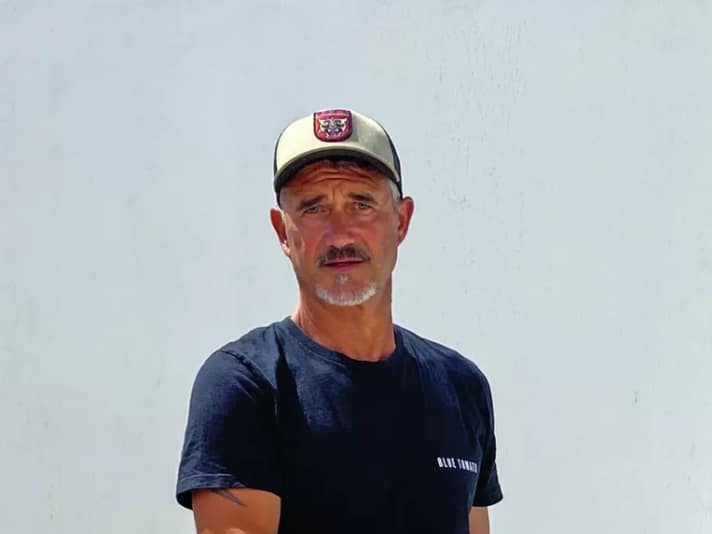
A moderate shape over nine feet, on the other hand, runs like on rails and allows you to change from parallel stance to surf stance only after paddling out. Josh's wave entry began on a Fanatic Fly 9'6'' (approx. 150 litres). "It's a voluminous, rather moderate longboard shape with a rounded nose, but not too wide. It was great for paddling because it doesn't turn away as quickly as the shorter boards. It was easy to surf and great fun. Of course you can do longer turns, but you can even ride it in bigger waves of two and a half to three metres. Switching to a Fanatic Pro Wave 8'10'' (about 125 litres) with a thinner tail didn't hurt that much later on. You can ride it a bit like a short board, but it's still quite easy and stable because it's wider in the standing area (30.5 inches). Switching to the 8'3'' Jimmy Lewis with just over 100 litres - for high, fast waves on Fuerte - was extremely hard. You simply get far fewer waves. Even for advanced intermediate paddlers who only surf a few times a year, I would recommend at least 120 litres for my weight. For beginners, the bigger the better. I wouldn't go below nine feet. You'll definitely have enough fun with a bigger board."
In addition to length, width and volume, the board shape - i.e. above all the outline, the bend and volume distribution - plays an equally important role.
Patrick Supper works in Naish board sales and can also look back on six months of "remote work" in the Canary Islands with plenty of surfing time. "My very first rides were on a 9'5'' Mana, 32'' wide, a classic, compact wide body board with 190 litres, but suitable for waves in terms of shape. At 70 kilos, I was able to quickly switch to the same model as a 9'0'' with 140 litres, and I was really good on it for the first year. In my third season it got smaller - first a Hokua Waveshape with 120 litres until I finally ended up with a 7'6'' High Perfomance shape with 97 litres. I wanted to do real turns in the waves, and at the time I was spending a whole winter in Gran Canaria and was on the water every day.
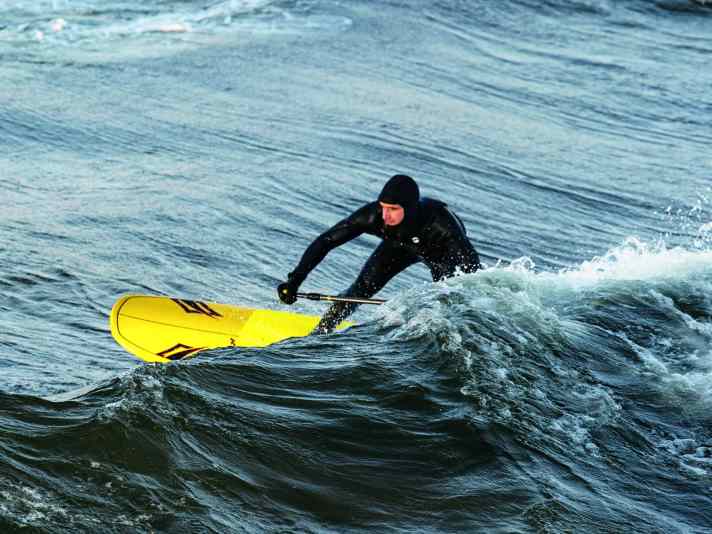
Back in Germany, I then changed, but stayed with the same volume (95 litres) but to a 7'0'' stubby shape with a wide rear and wide nose. That's what I've stuck with now. With a SUP, you basically have the advantage that you can take big round waves and can always reposition yourself with the paddle on the wave. You can ride in flatter sections - if you have a suitable board with a flat rocker line. With performance boards, you always have to ride in steep sections. You always have to get the energy out of the wave, which is only possible with very high riding skills.
With a flatter scoop rocker line and a wider tail, on the other hand, you can also ride further in front of the wave and surf a rounder wave without any problems. Without the right riding skills, you are always at a disadvantage with the radical shape." For a dedicated flat water paddler without any surfing experience, "Paddi" recommends a wide body board with approx. 140 to 160 litres in his weight class. "A wide tail is always good, then you can also go for a slightly smaller 30 or 31 litre width. Like our 8'10'' Mana GTW Custom. But you find that with all-rounders and not at all with wave SUPs. But in the SUP sector, most boards in the all-round segment have always been suitable for waves due to their history."
Surprisingly, these shapes are more suitable for wave beginners than the even longer "longboards". "Boards like our Nalu 10'0'' - these are narrow, pure performance longboards with a strongly curved tail. They are narrow and much more tippy. If a lot of length is good, a flatter rocker line is even more important. An 8'10'' with a flat rocker line starts earlier than the longer performance board with lots of rocker. And you can turn the board faster and more safely even with less good riding skills. In my experience, the most important thing for beginners is simply to have super good stability. After an hour in the line-up, you're already completely screwed up anyway, you have to constantly orientate and position yourself, and there are also other people like surfers. Every inch you give yourself in width - and therefore in stability - shortens the learning curve immensely." For 85 to 90 kilos, Patrik recommends a Mana GTW 9'5'' with 163 litres and even a 10'0'' with 190 litres for really heavyweights. "You can even sail around the lake a bit with that. And with a 140-litre Mana - I tried it out in Agadir - you can also surf round waves of up to two and a half metres. It's different to a performance shape, but it works."
Board parade: the different wave SUP boards
Performance longboards (1: Naish Nalu) are narrow (under 30 inches) and not a good choice for beginners. They should also only be surfed by experienced wave paddlers in fast waves due to the large amount of bend in the tail ("rocker").
This also applies to the very radical short boards (4: RRD I-Wave 8'4" Ltd.), often with a pointed nose and narrow tail and also a lot of deflection in the entire gliding surface.
For hobby wave riders, compact, wider shapes ("stubbies") between 8'2'' and 8'10'' with a width of around 30 to 32 inches (2: Fanatic Allwave SUP) or the somewhat more elongated shapes, some of which are found as all-round boards (3: JP-Australia Fusion We 9'8" Surf SUP), which are usually 9'2'' to 10'0'' long and also around 30 to 32 inches wide, are of particular interest.
